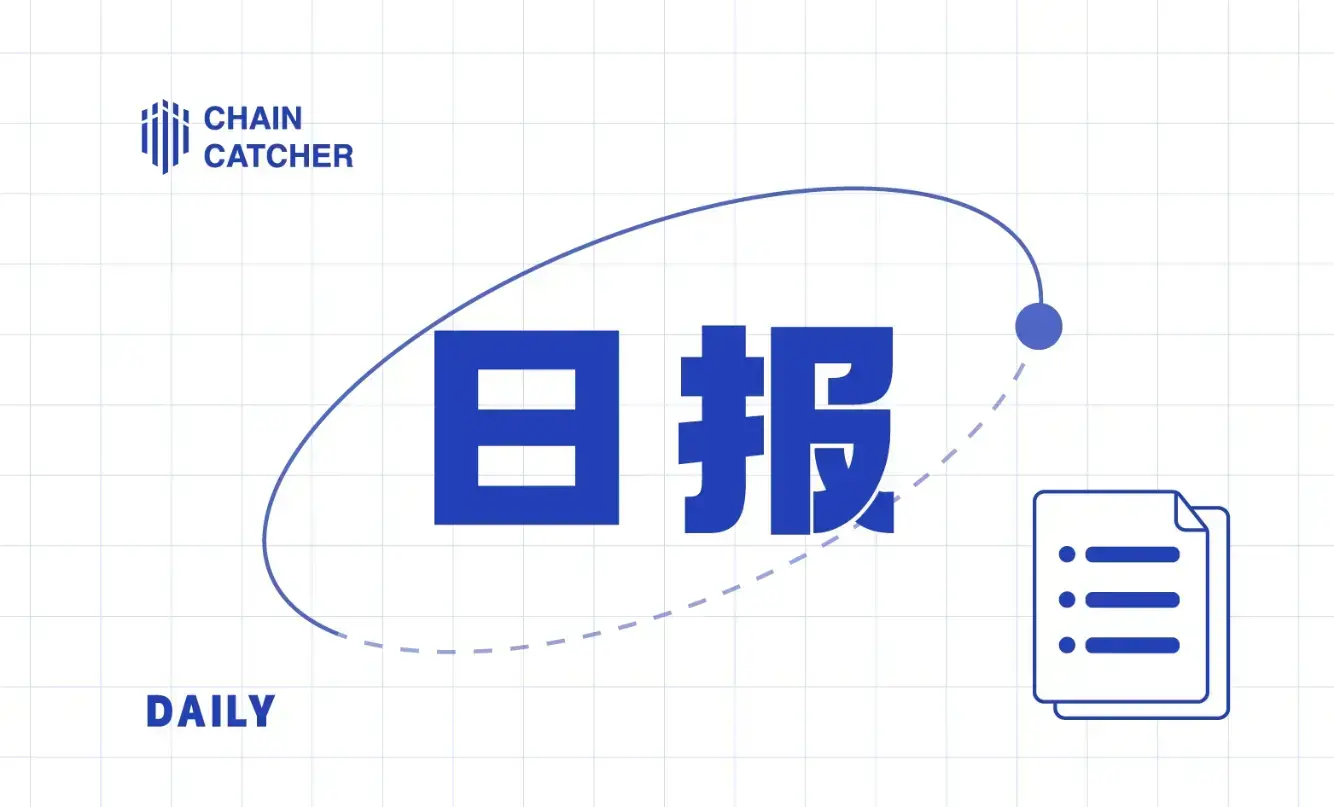Synthetix Founder: Reassessing Synthetix's Multichain Vision and Liquidity Sharing
Author: Kain.eth
Compiled by: Deep Tide TechFlow
With the official launch of Synthetix V3, now is the best time to question past assumptions to ensure the community aligns with the long-term vision. This article will focus on the SNX token and its role in the ecosystem.
Multi-chain
Synthetix has grand ambitions. The difficulty of deploying the Synthetix protocol across multiple chains far exceeds that of most other DeFi protocols. This is because most protocols deploy independent instances on each chain, which introduces operational complexity, but it is the simplest way to maintain presence across multiple networks. Many protocols then control these different instances through unified governance. While this adds additional complexity, governance typically operates off-chain or on a single network. Some protocols even go further, where operations on one chain affect all other chains. This can be achieved through cross-chain bridges, liquidity management, or shared settlement. Protocols can also support the interchangeability of cross-chain assets on-chain through wrappers or bridging.
As early as the beginning of 2020, the Synthetix community envisioned a grander scenario: a single protocol spanning multiple networks, where system behavior mimics that every operation on each chain occurs on a unified chain. While we are closer to achieving this goal than we were three years ago, it remains challenging. There are still many unresolved technical challenges that must be addressed. Given the developments in cryptocurrency over the past few years, it is worth reconsidering whether this multi-chain approach is still the best method.
Why share liquidity?
Imagine deploying Synthetix on five different EVM networks. The SNX token could seamlessly move between these networks and be used to provide liquidity (SNX LP) on each network to support trading. Complexity arises when these SNX LP positions also support liquidity on other networks. If Alice only trusts Mainnet, she can provide SNX LP there and provide liquidity for the other four supported networks. However, there is a potential contradiction here: if she only trusts Mainnet, why would she support liquidity on other networks?
Bob can provide SNX LP on Optimism and supply liquidity for Mainnet, Optimism, and Base. Carol can provide LP on Avalanche and only supply liquidity for that network. Theoretically, the market should resolve this issue, and liquidity will flow to where trading demand is highest. This design assumes that each network has a certain proportion of single users who only trade on that network and not elsewhere. If they cannot provide LP and trade on their chosen network, they will be completely excluded from Synthetix.
We can question this assumption later; for now, let’s look at what it takes to implement this.
Implementing shared liquidity
The complex approach is to deploy different markets and pools on each network and then allow liquidity providers to provide cross-network liquidity from any network. In Synthetix V3, a market represents a single asset, such as sBTC, while a pool allows liquidity providers to send liquidity to a market aggregator, which then delegates it to multiple markets. The main pool will be the Spartan Pool, which will contain all "officially supported" markets. In Synthetix V2x, there was only one pool containing all supported markets, and all liquidity providers were forced to delegate liquidity to this pool.
Alright, let’s look at a specific trader to understand what this means for them. Suppose this trader only trades on Base. They enjoy swing trading ETH; to ensure they can continuously open new positions, there must be enough liquidity delegated to the Base Spartan Pool and/or delegated to the Base ETH pool. Keep in mind that in this setup, it does not require anyone to provide liquidity on Base; all this liquidity can come from Mainnet or other chains. This is effective for Base traders because demand for sETH on Base will lead liquidity providers from other networks to directly delegate liquidity to this Base market through a single market pool or a pool containing the ETH market.
To make this implementation work, a significant amount of cross-chain communication is needed. In reality, this is a very large task, especially as the number of supported networks increases. This can be achieved through CCIP and some upcoming Chainlink infrastructure, but we must ask ourselves not "Can we do it?" but rather "Should we do it?"
What do we want to achieve?
Ultimately, we want an efficient liquidity market where demand on any chain can be met by supply on that chain. One assumption is that liquidity is limited, so we must be able to share liquidity across networks to avoid liquidity fragmentation, where trading is possible on each network, but due to limited liquidity being overly dispersed, liquidity across all networks is poor. This leads to a cold start problem: insufficient liquidity on any one network suppresses demand, thereby reducing incentives for further liquidity provision.
Currently, liquidity is limited, but some liquidity is more limited than others. Part of the reason for this multi-chain complexity is that the community has realized that, in the short term, SNX liquidity is unlikely to meet the demand across all networks. Therefore, to avoid introducing other collateral, we must contort ourselves into various forms to achieve this cross-chain liquidity system to avoid fragmenting limited SNX liquidity. What I want to point out here is that I believe that in the long run, if there is demand, the SNX token will expand to support the required levels of liquidity.
The problem is that in a bear market, this is a lagging process, and demand has not sufficiently increased SNX collateral. Thus, we are forced to choose in a compromise: increase the complexity of the system to solidify SNX's role as the primary collateral, or find a compromise.
Why not just stay on Optimism?
A key assumption of this inquiry is that markets must exist on every chain. I think this is a reasonable assumption. But it is an assumption we should question. A similar situation would be if Coinbase had a separate exchange for every operating system, so no matter which operating system you prefer, you could trade.
On Debian, how much liquidity could one expect on Coinbase? This analogy slightly misses the point; a better analogy is if Coinbase had different markets for each database engine to cater to user preferences. Do users have strong enough database preferences to influence their use of trading platforms?
However, this is precisely the situation we currently face in the cryptocurrency space. Some people are staunch supporters of specific chains and even refuse to acknowledge or trade on other networks. Why do we see this phenomenon on smart contract platforms but not on databases? In this analogy, databases are the state storage layer of CeFi, while L1/L2 networks are the execution and/or state storage layer of DeFi. The reason is simple: it’s called tokens. While supporters of database engines may be annoying, there is no mechanism to pass this technological tribalism onto the end user.
In the cryptocurrency space, we have built a very strong incentive mechanism to promote this user preference. This phase may eventually pass, but for now, I think it is reasonable to assume that there are different user groups across most networks.
Eternal Fragmentation?
Well, user fragmentation at the execution layer is not surprising, and we seem to be temporarily stuck in this situation. Although what users ultimately want is utility, they are also highly motivated to hope that this utility exists only on the networks they support.
Thus, even if we build the most optimized exchange in history, if it only exists on one chain, it will be isolated and unable to gain the attention it deserves. This is particularly evident when competitors—centralized exchanges—can choose any tech stack and put all users into a single database, and no one will care. This means all their liquidity is on an island, which is a huge advantage that cross-chain decentralized exchanges cannot match.
By the way, one way to solve this problem is to abstract the networks and make them more like a centralized exchange; this is precisely the experiment Infinex intends to try. From Synthetix's perspective, this is a valuable experiment. However, Synthetix must optimize for the reality of Infinex's failure, which means as a protocol, it must meet users on every chain where they wish to trade or provide liquidity.
What options do we have?
If we accept that the Synthetix protocol needs to be where users are, how does it get there? In my view, there are three methods.
Deploy a forked version of Synthetix on each chain;
Implement a unified cross-chain protocol where state changes must be pushed to all chains;
Deploy an independent instance on each new chain and minimize cross-chain messaging and liquidity fragmentation by utilizing non-SNX collateral.
Option One: Forking Forever
This is not a viable method, although it may be fun to do. The main issue preventing us from doing this is the reliance on the SNX token as collateral. If you have 10 forked SNX tokens, they are likely to devalue, significantly reducing liquidity on each fork, undermining the purpose of avoiding liquidity fragmentation. Most protocols simply deploy new instances of their contracts and let liquidity flow to the new network; Aave and Uniswap are good examples.
For Synthetix, we need a significant amount of SNX as collateral on the network, and we also have a lot of governance overhead. Therefore, we may need to fork the SNX token on each network. You can test this process with Base. We could deploy a brand new Synthetix instance, including SNX, and prefix all tokens with 'b'. Thus, we would have bSNX, bsUSD, and bsBTC. While this may be fun, I don’t think this is our best hope.
But again, this could be very interesting, and I’m not saying we shouldn’t consider this method. One advantage of today’s forking approach compared to a few years ago is that deployment has become much easier. In the past, even deploying Synthetix to one network could take days. At that time, even if each deployment was independent, deploying multiple instances across networks was not feasible.
Option Two: Unified Liquidity Theory
This method simply requires solving all technical issues and building a network protocol that can maintain all necessary cross-chain messaging. Then we can continue to rely solely on SNX collateral. This is theoretically great, and we are moving in that direction, but what if our assumption above is wrong? What if there are not enough independent users across all these chains to generate incremental trading volume? What if we spend too much time building this supporting infrastructure while another protocol builds a single network solution that is far superior to all other decentralized exchanges, and users start migrating to that protocol?
There is a precedent here: dYdX, but they have built a powerful enough trading engine that traders are willing to migrate there. If their new engine on Cosmos is significantly better than all other DEXs, will Ethereum Virtual Machine users migrate en masse? I think we should focus most of our energy on core product features rather than supporting infrastructure. But at the same time, we should at least conduct some experiments to determine whether there is enough trading volume on other chains to justify the necessity of a cross-chain solution.
Option Three: Exploring Taboo Waters
I, along with some other OGs, hold the dogma of pure SNX collateral. Anyone challenging the sanctity of pure SNX collateral must be burned or bound and thrown into the lake (metaphorically). Even the noble duo of Fifa and ha-oN would not be spared this fate if they were tempted by the dirtiness of Ethereum collateral. However, we have a fantastic opportunity to test the potential network demand hypothesis without cross-chain SNX collateral. We could deploy perpetual contracts on Base and use Ethereum as the only collateral. This would reduce the risk of transferring SNX liquidity from Optimism. It requires almost no cross-chain communication.
The main issue would be migrating fees and burning them to Optimism. But there is another potential option: we could use the fees generated on that network to buy back and burn SNX. This allows us to test two novel approaches simultaneously with relatively low risk. If one of these methods fails, we have already established a foothold on the new network, which can later be upgraded and replace Ethereum collateral with SNX. We could also switch back to burning debt on that network instead of doing buybacks.
This brings up the final question: the best incentive mechanism for liquidity provision is to burn debt only on the network providing liquidity, rather than burning global debt. Regardless of which network they provide LP on, we create a "free-rider" problem, where camping on the "safest" network may be beneficial, even if it is not the network with the highest demand, and even if that network does not have the highest demand, it may still be profitable to stay on the "safest" network.
A New Hope
If we release ETH collateral on a new network, I believe Base is the best choice. This would allow us to increase trading volume without threatening trading revenue on Optimism. It is also lower risk than Arbitrum. This should be a win for SNX liquidity providers. The counterargument is: if we allow people to migrate SNX to Base and provide liquidity there, SNX will capture 100% of the fees on both networks instead of sharing fees. This is correct, but the risk is minimal for SNX liquidity providers because we control governance.
We can conduct this controlled experiment and then decide based on data what is best for SNX holders. This test is not one-way; if we have too much SNX collateral on Optimism, we can allow SNX to migrate to Base and use it as collateral. This would dilute ETH returns and reach a new balance. We could even implement a cap on ETH liquidity or completely remove it as collateral. This is why governance must be entirely in the hands of SNX liquidity providers.
Crucially, this experiment will prove a point: that there is incremental trading volume on a new network without harming existing trading volume on Optimism. As long as the fee split for SNX is high enough, we should be able to understand well the incremental revenue we can generate. I think we should start from a lower level and then adjust as we progress.
Capturing 40% of the fees for SNX liquidity providers is a good starting point, and we can adjust from there. We must determine whether ETH liquidity providers are willing to join the network; if the fee split is too high for SNX, we will not be able to accurately test people's inclination to provide ETH liquidity.
What if this plan works?
If we conduct this experiment and see strong demand for LP ETH and trading on the new chain, will we destroy SNX tokens? I don’t think so. If this plan works, we can expand the experiment to other chains; Arbitrum and Polygon may be the most obvious two choices. At this point, we may have enough data to recognize that Optimism trading is also constrained by SNX liquidity. If that is the case, we could also allow ETH as collateral on Optimism.
Furthermore, if it appears that liquidity demand supported by ETH far exceeds that supported by SNX, we could even decide to disable SNX liquidity on Optimism. However, if we do this, I think we need to take additional measures.
Our Own Chain
If after conducting these experiments, the market demand for ETH-supported trading far exceeds that for SNX-supported trading, we must accept this and capitalize on it. The next step would be to create an AppChain on the Optimism superchain. This would allow us to migrate governance to a chain we control; it would also be where you can get leveraged sUSD loans on SNX. This remains a key feature of the Synthetix network and one of the main benefits of collateralizing SNX.
I believe we don’t even need to enable trading on this network, as there is very little ETH liquidity on that network. This will be the network where all backend functions of SNX reside. If in the future we believe we can efficiently develop a cross-chain shared liquidity system, then this will be the place where liquidity exists and is delegated to other chains.
Open Network
Due to the need for hedging, providing SNX liquidity has always been challenging and carries high risk. This issue, combined with high inflation rates, means that few integrators are willing to create staking solutions for SNX. By migrating to an AppChain, we can reduce the risk of staking SNX and completely eliminate inflation. This could potentially allow staking SNX to be integrated into more platforms and open the network to a broader user base. Currently, due to hedging requirements, the risk-adjusted yield for liquidity providers is much lower. It is possible that SNX will still serve as the insurance fund for the network, but this does not require active maintenance and carries far less risk than ongoing hedging.
What about cross-chain swaps?
They can still be supported in this new design; they will require CCIP, but in principle, even with liquidity on each chain, we can still support the interchangeability of Synths between chains. This does require cross-chain messaging, but it is not as cumbersome as supporting cross-chain liquidity. Cross-chain remains a very lucrative and emerging market, and while focusing on perpetual contracts is the optimal strategy right now, we should absolutely continue to experiment with Synth Teleporters and other novel mechanisms.
Conclusion
In summary, we face several technical challenges: we can sidestep these challenges and test one of our core assumptions. Is there potential demand for trading on other networks? We can do this by leveraging ETH collateral with minimal risk. If this plan works, we can expand this experiment to other networks. If this route looks correct, we can migrate to our own AppChain and collect fees from multiple networks, utilizing ETH collateral while using SNX solely to coordinate and manage the protocol. We give up a portion of total fees, but we can scale quickly and avoid another protocol gaining dominance.
We can test exclusive SNX collateral on any network at any time and limit ETH collateral or other collateral as needed. This allows us to rapidly scale to multiple chains with minimal technical overhead. There is a lot of data to collect in this process, and we should test each step incrementally, just as we have always done in Synthetix.
The key question I want to raise is: are we willing to capture a certain percentage of the addressable fee total now, or wait longer to capture 100% of future fees when we are ready to deploy a true cross-chain implementation? The good news is that we may be able to have both; if the former proves more profitable, we will ultimately end up with a more accessible network where anyone can easily stake and join the network, with a much lower barrier to entry.











